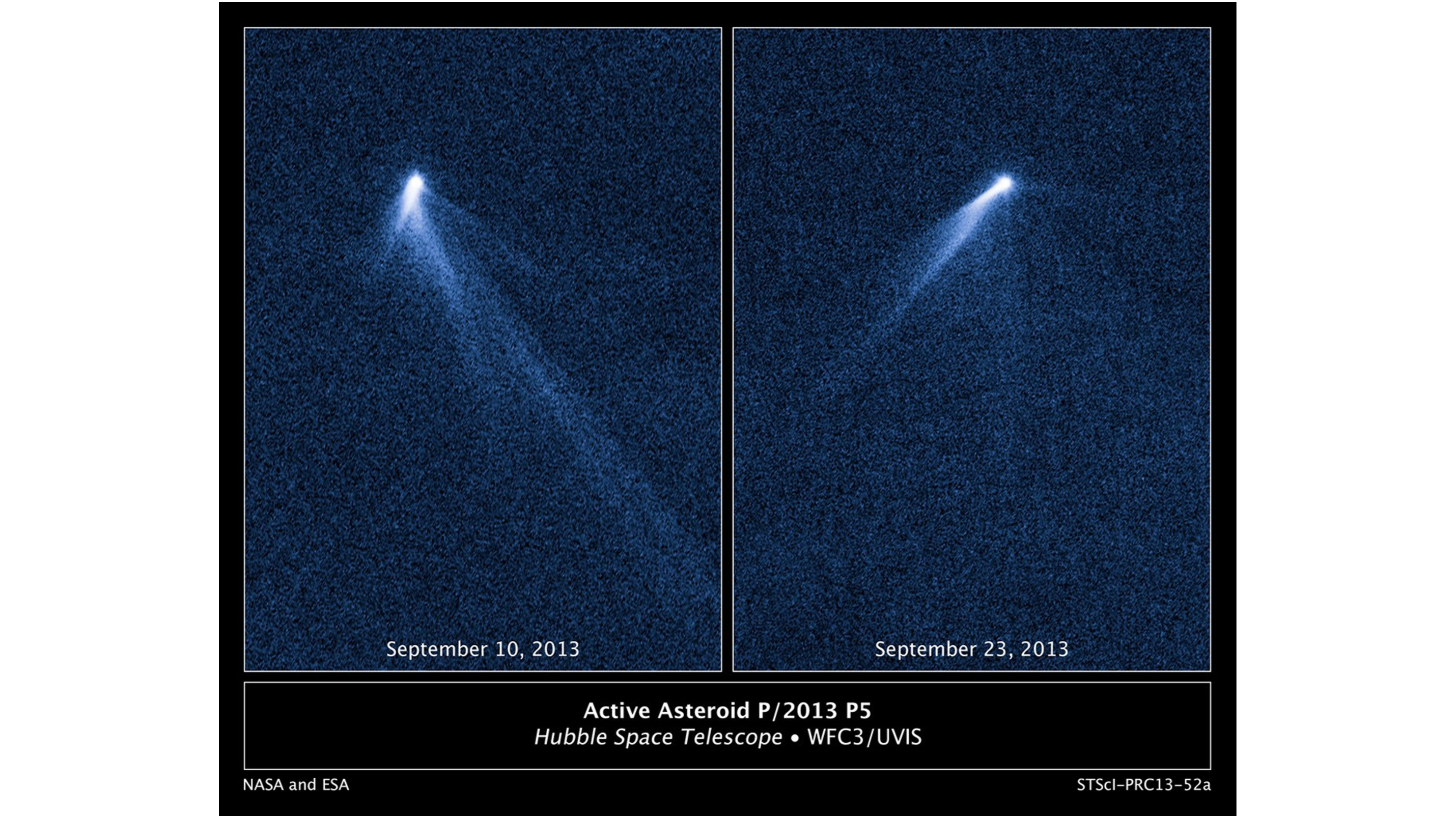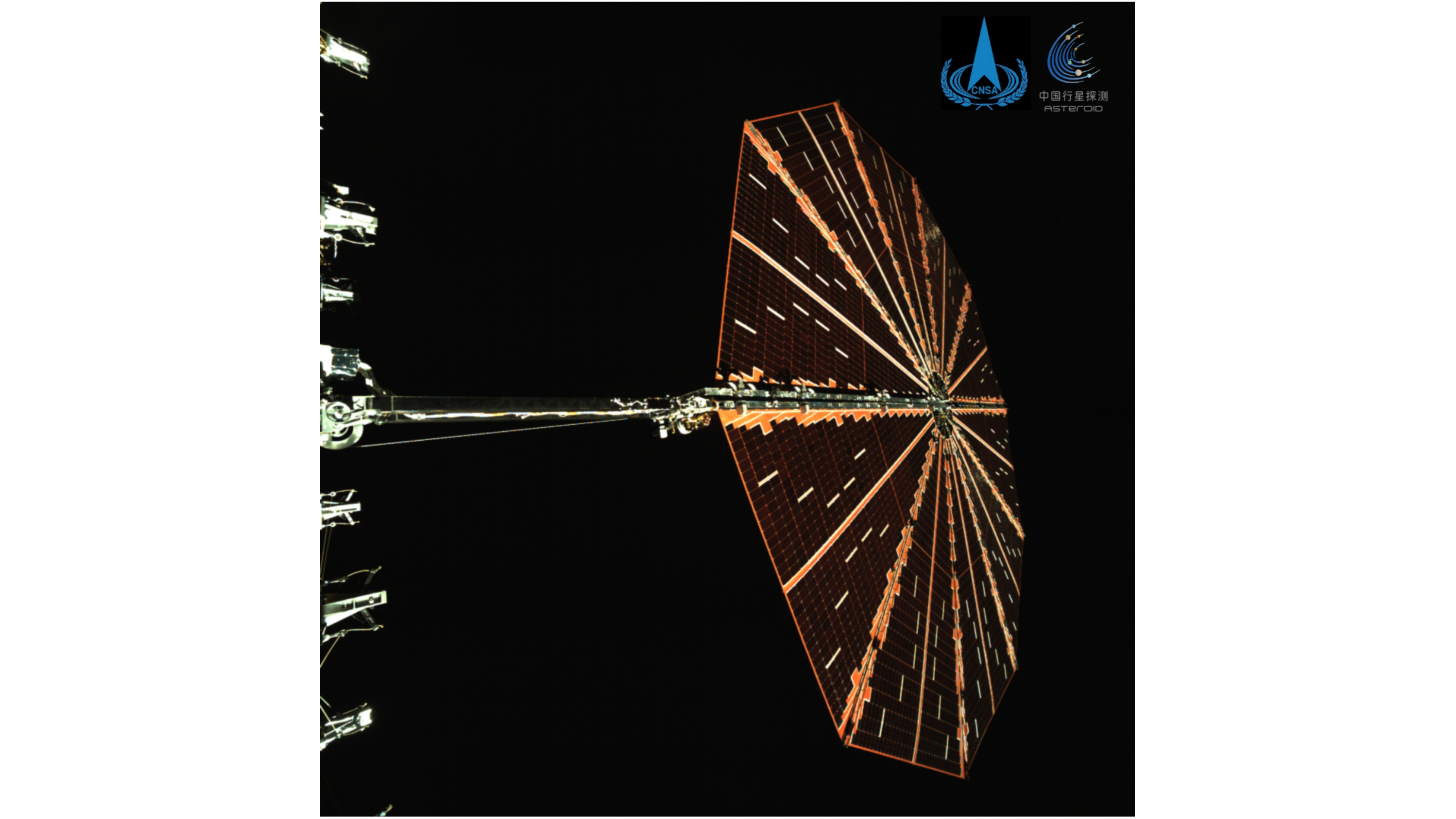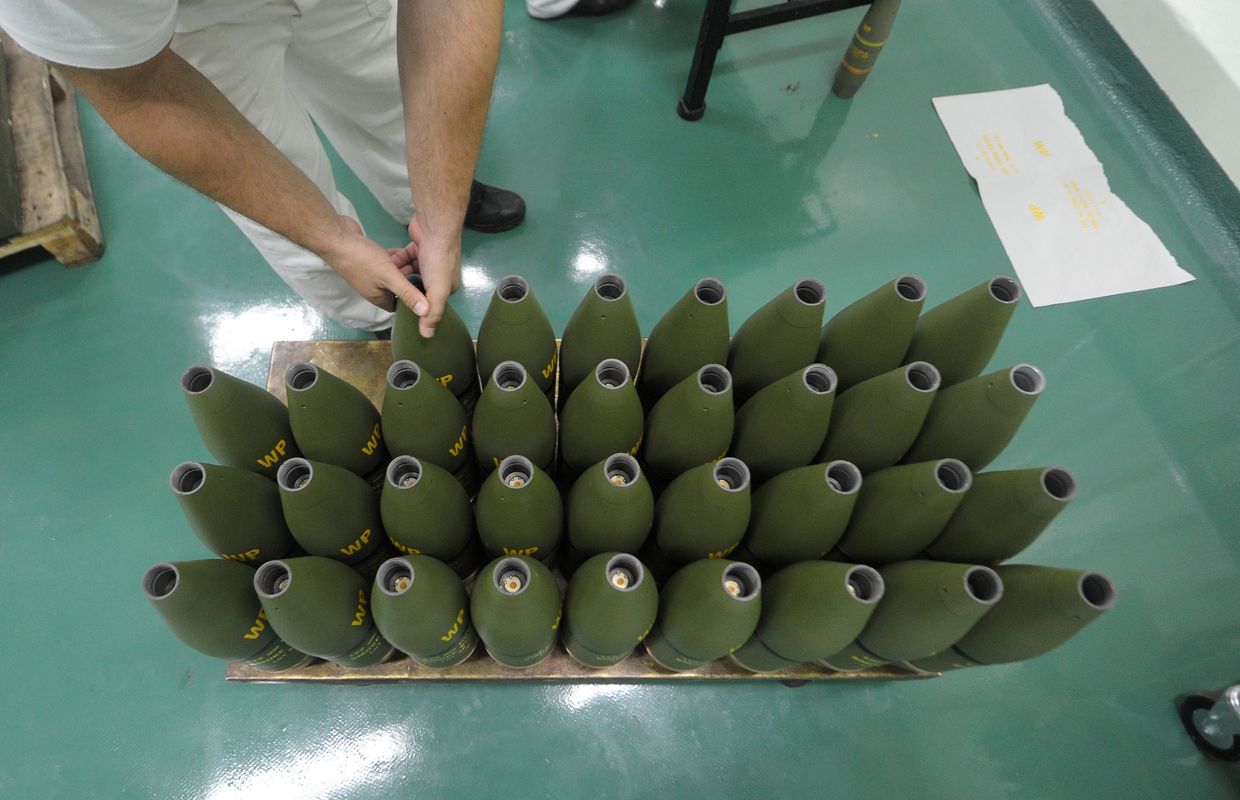China has released a first picture of its Tianwen 2 mission as the spacecraft heads for a near-Earth asteroid.
Tianwen 2 launched on a Long March 3B rocket on May 28 and is tasked with rendezvousing with and sampling the mysterious asteroid Kamo'oalewa, which is one Earth's seven known "quasi moons." And the mission is proceeding well, according to a first official update.
The China National Space Administration (CNSA) revealed in a June 6 statement that the spacecraft is operating well and is more than 3 million kilometers (1.86 million miles) away from Earth.
CNSA also published an image taken by an engineering camera aboard the spacecraft showing one of Tianwen 2's two circular solar panels, which are similar in appearance to those on NASA's Lucy mission to visit the Trojan asteroids near Jupiter.
Remarkably, the image is the first actual glimpse of Tianwen 2 released to the public. Until now, only artistic renderings had been released, and the mission's launch was not broadcast live.
Tianwen 2 is expected to reach Kamo'oalewa in July 2026, following engine burns to fine-tune its orbit. It will spend several months orbiting and studying the asteroid — which scientists think could be a chunk of the moon that was blasted out by a giant impact — before collecting samples and heading for Earth.
After delivering the samples in a reentry capsule in late 2027, Tianwen 2 will use Earth's gravity for a slingshot maneuver to send it on a course to rendezvous with main belt comet 311P/PANSTARRS around 2035.
The mission, by visiting an asteroid and comet, aims to provide data on the nature and composition of the planetary bodies, as well as insights into big questions such as the evolution of the solar system and the origin of water on Earth.

Tianwen 2 will not be China's first deep space encounter with an asteroid. The country's Chang'e 2 lunar orbiter made a flyby of the asteroid Toutatis in 2012 as part of an extended mission after mapping the moon.
China also has sample-return experience with its Chang'e 5 mission, which snagged material from the moon's near side in 2020, and Chang'e 6, which collected the first-ever samples from the lunar far side in 2024.
Tianwen 2 is China's second planetary exploration mission. It follows Tianwen 1, launched in 2020, which sent an orbiter and a rover to Mars.
.png)
 German (DE)
German (DE)  English (US)
English (US)  Spanish (ES)
Spanish (ES)  French (FR)
French (FR)  Hindi (IN)
Hindi (IN)  Italian (IT)
Italian (IT)  Russian (RU)
Russian (RU) 







Comments